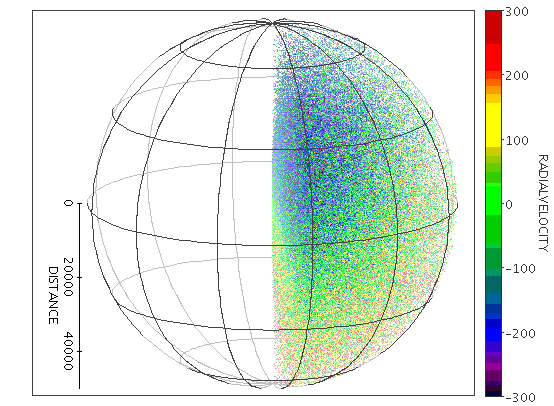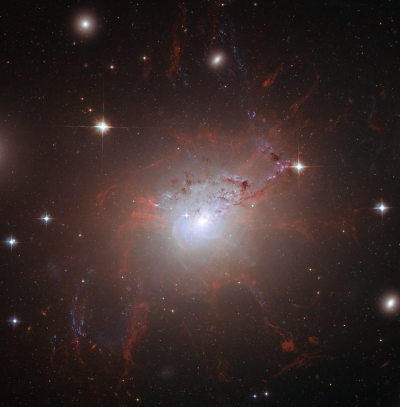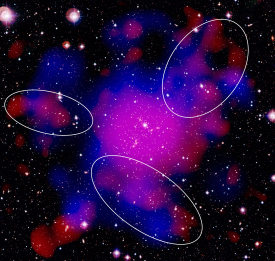http://www.cosmos.esa.int/web/gaia
2015年12月10日木曜日
2015年12月9日水曜日
Plank Image: Magnetic field lines traced by dust emission at 353 GHz [Feb 2015]
http://xxx.lanl.gov/abs/1502.01582
http://www.cosmos.esa.int/web/planck/picture-gallery
http://apod.nasa.gov/apod/ap130325.html
Magnetic field lines traced by dust emission at 353 GHz [Feb 2015]
http://www.cosmos.esa.int/web/planck/picture-gallery
http://apod.nasa.gov/apod/ap130325.html
Magnetic field lines traced by dust emission at 353 GHz [Feb 2015]
Cosmology with the Planck satellite
ISAS 「宇宙科学談話会(第32回)」
講師: Francois R. Bouchet (Institut D’Astrophysique de Paris)
http://www2.iap.fr/users/bouchet/bouchet.html
題目: Cosmology with the Planck satellite
Space Science Colloquium
Date: 16:30-17:30, 9th of December (Wed), 2015
Place: Conference room (Main building 2F)
Speaker: Francois R. Bouchet (Institut D’Astrophysique de Paris)
Title: Cosmology with the Planck satellite
Abstract: Sketched out in 1992, selected by ESA in 1996, and launched in
2009, the Planck satellite was shut off in 2013, after a measuring
mission that exceeded all expectations. The Planck collaboration
delivered a first set of cosmological data and results in March 21st
2013, and the full set in February 2015. Part of the data delivery is a
"definitive" map of the anisotropies of the Cosmic Microwave Background
(CMB), its angular power spectrum together with their full statistical
characterisation. The 2015 delivery also includes pioneering
polarisation data. The temperature anisotropy map displays minuscule
variations as a function of the observing direction, of rms ~100microK,
of the fossil radiation around its mean temperature of 2.725K. Other
maps reveal the CMB polarisation. The anisotropies are the imprint of
the primordial fluctuations which initiated the growth of the large
scale structures of the Universe, as transformed by their evolution, in
particular during the first 370 000 years. The polarisation is another
imprint whose theoretical implications can then be confronted with those
derived from the temperature field. I will described the results we
obtained so far from temperature and polarisation data, both in terms
of content of the universe and of characteristics of the primordial
fluctuations.
講師: Francois R. Bouchet (Institut D’Astrophysique de Paris)
http://www2.iap.fr/users/bouchet/bouchet.html
題目: Cosmology with the Planck satellite
Space Science Colloquium
Date: 16:30-17:30, 9th of December (Wed), 2015
Place: Conference room (Main building 2F)
Speaker: Francois R. Bouchet (Institut D’Astrophysique de Paris)
Title: Cosmology with the Planck satellite
Abstract: Sketched out in 1992, selected by ESA in 1996, and launched in
2009, the Planck satellite was shut off in 2013, after a measuring
mission that exceeded all expectations. The Planck collaboration
delivered a first set of cosmological data and results in March 21st
2013, and the full set in February 2015. Part of the data delivery is a
"definitive" map of the anisotropies of the Cosmic Microwave Background
(CMB), its angular power spectrum together with their full statistical
characterisation. The 2015 delivery also includes pioneering
polarisation data. The temperature anisotropy map displays minuscule
variations as a function of the observing direction, of rms ~100microK,
of the fossil radiation around its mean temperature of 2.725K. Other
maps reveal the CMB polarisation. The anisotropies are the imprint of
the primordial fluctuations which initiated the growth of the large
scale structures of the Universe, as transformed by their evolution, in
particular during the first 370 000 years. The polarisation is another
imprint whose theoretical implications can then be confronted with those
derived from the temperature field. I will described the results we
obtained so far from temperature and polarisation data, both in terms
of content of the universe and of characteristics of the primordial
fluctuations.
ラベル:
cosmology,
isas-rigaku-seminar,
Planck,
plank,
seminar
2015年12月8日火曜日
XMM-Newton observations of the cluster of galaxies Abell 496
http://adsabs.harvard.edu/abs/2001A%26A...379..107T
The results from XMM-Newton observations of the relaxed cluster of galaxies Abell 496 are presented. The spatially-resolved X-ray spectra taken by the European Photon Imaging Cameras show a temperature drop and a Fe abundance increase in the intra-cluster medium (ICM) towards the cD galaxy at the cluster center. The abundances of Si and S also show a central enhancement. High resolution soft X-ray spectra obtained with the Reflection Grating Spectrometers provides a strong constraint on the temperature structure in the central cool plasma. Furthermore, the O abundance at the cluster core is accurately measured based on the O Viii Lyalpha line detected with the RGS. Contrary to the Si, S, and Fe abundances, the O abundance is radially constant over the cluster.
The results from XMM-Newton observations of the relaxed cluster of galaxies Abell 496 are presented. The spatially-resolved X-ray spectra taken by the European Photon Imaging Cameras show a temperature drop and a Fe abundance increase in the intra-cluster medium (ICM) towards the cD galaxy at the cluster center. The abundances of Si and S also show a central enhancement. High resolution soft X-ray spectra obtained with the Reflection Grating Spectrometers provides a strong constraint on the temperature structure in the central cool plasma. Furthermore, the O abundance at the cluster core is accurately measured based on the O Viii Lyalpha line detected with the RGS. Contrary to the Si, S, and Fe abundances, the O abundance is radially constant over the cluster.
ラベル:
Abell496,
tamura_papers,
XMM-RGS
because it is beautiful
Henri Poincaré
in
Science and Method
copy fromhttp://www.goodreads.com/quotes/279030-the-scientist-does-not-study-nature-because-it-is-useful
“The scientist does not study nature because it is useful to do so.He studies it because he takes pleasure in it,
and he takes pleasure in it because it is beautiful.
If nature were not beautiful it would not be worth knowing,
and life would not be worth living.
I am not speaking, of course, of the beauty which strikes the senses, of the beauty of qualities and appearances.
I am far from despising this, but it has nothing to do with science.
What I mean is that more intimate beauty which comes from the harmonious order of its parts, and which a pure intelligence can grasp.”
Teaching and learning astronomy in the 21st century
http://scitation.aip.org/content/aip/magazine/physicstoday/article/62/10/10.1063/1.3248478
2009, physics today
* パリティ 2010 No.8
21 世紀の天文学の教え方・学び方 E. E. プラザー,A. L. ルドルフ,G. ブリッセンデン 福江純訳
2009, physics today
* パリティ 2010 No.8
21 世紀の天文学の教え方・学び方 E. E. プラザー,A. L. ルドルフ,G. ブリッセンデン 福江純訳
ラベル:
education,
parity,
physicsToday
Astronomy for the Developing World 2010-2020
http://www.iau.org/education/strategic_plan/
Astronomy is a unique and cost-effective tool for furthering sustainable global development, because of its technological scientific and cultural dimensions. This plan shows how astronomy can contribute globally to education at the primary, secondary and tertiary levels and can enable less developed, poorer countries to participate in cutting-edge scientific research.
登録:
投稿 (Atom)



